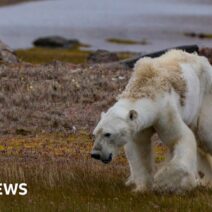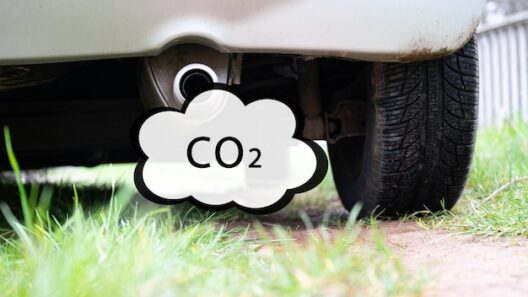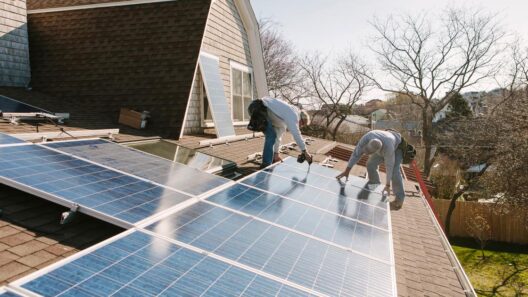Global warming remains one of the most pressing issues of our time, an existential threat that looms large over the future of our planet. At its core, global warming refers to the long-term rise in Earth’s average surface temperature, primarily caused by an increase in greenhouse gases in the atmosphere. This phenomenon is like a slow, unrelenting tide, steadily creeping higher and altering the very landscape of our lives. Understanding the intricacies of global warming is paramount to comprehending the climate crisis and our role within it.
The warming climate is not merely a mathematical anomaly; it is a reflection of the delicate equilibrium that life on Earth relies upon. Ecosystems flourish and flourish in harmony when temperatures remain stable. But as the Earth warms up, this balance begins to fray, leading to chaotic consequences that ripple through our environmental tapestry.
The greenhouse effect serves as the engine behind this warming trend. When sunlight strikes the Earth, some of it is absorbed, while the rest is reflected back into space. Greenhouse gases — including carbon dioxide, methane, and nitrous oxide — trap some of this heat in the atmosphere, creating a thermal blanket around the planet. This mechanism is vital for life, but excessive emissions from industrial activities, deforestation, and agriculture have thickened this blanket. As a result, more heat is retained, raising the Earth’s temperature as an uninvited guest at a gathering that grows more uncomfortable with every passing moment.
To make sense of global warming, it’s essential to explore the various culprits contributing to this crisis. These factors are not just scientific phenomena; they embody the habits and practices of human beings engaging in activities often taken for granted. The burning of fossil fuels—coal, oil, and natural gas—remains the primary driver of greenhouse gas emissions. These fossil fuels are deeply embedded in our economies and lifestyles, serving as the lifeblood that powers modern civilization. Yet, they come with hidden costs that contrast sharply with the convenience they offer.
Deforestation is another significant contributor. When forests are cleared for agriculture or urban development, not only does the carbon stored in trees get released into the atmosphere, but the essential processes of carbon absorption diminish. The lungs of our planet are being dismantled piece by piece, leaving a void that exacerbates the warming effect.
The consequences of global warming are insidious and far-reaching. Weather patterns become erratic, with an increase in the frequency and severity of extreme weather events. Think of hurricanes and heatwaves as nature’s way of articulating its distress. As storm systems gain power from warmer ocean waters, communities struggle to adapt. Flooding, drought, and wildfires become commonplace, reshaping landscapes, economies, and human lives.
One cannot discuss global warming without addressing the ever-widening disparity it fuels among populations, particularly between affluent nations and developing countries. The latter often lack the resources to adapt to the changing climate, vulnerable to disasters that wealthier countries can withstand. This disparity portrays global warming as not only an environmental crisis but also a social justice issue, igniting conversations around equity and responsibility.
When examining global warming, it is pivotal to recognize the concept of “tipping points,” which are critical thresholds where minor changes can lead to profound effects. For example, the melting of the polar ice caps serves as one such tipping point. Increased melt rates not only contribute to rising sea levels but also reduce the Earth’s albedo effect—its ability to reflect sunlight. With less ice to reflect solar energy, even more heat is absorbed by the darker ocean water, accelerating the warming process in an irreversible cycle.
Mitigation efforts against global warming encompass a spectrum of strategies. Transitioning to renewable energy sources such as solar, wind, and hydroelectric power forms the crux of many proposed solutions. These methods not only reduce greenhouse gas emissions but also promote sustainable development and energy independence. Furthermore, legislation aimed at regulating emissions and encouraging sustainable agricultural practices is critical in recalibrating our relationship with the planet.
As we plunge deeper into the climate crisis, adaptation strategies become equally important. Communities must evolve to withstand the changes already set in motion. This can range from improving infrastructure to better manage flooding to enhancing agricultural resilience against unpredictable weather patterns. Global warming urges us to innovate and rethink our approaches as enablers of change rather than passive observers.
In conclusion, global warming is not merely a scientific concept; it is a clarion call for collective action. The complexities of climate change urge a holistic understanding, evoking a sense of urgency to address both its causes and consequences. We stand at a crossroads, where choices made today will reverberate for generations to come. Acknowledge the undeniable truth: the time for action is now. The fate of our planet rests upon the decisions we undertake in our everyday lives, each one a thread woven into the grand tapestry of Earth’s future.








